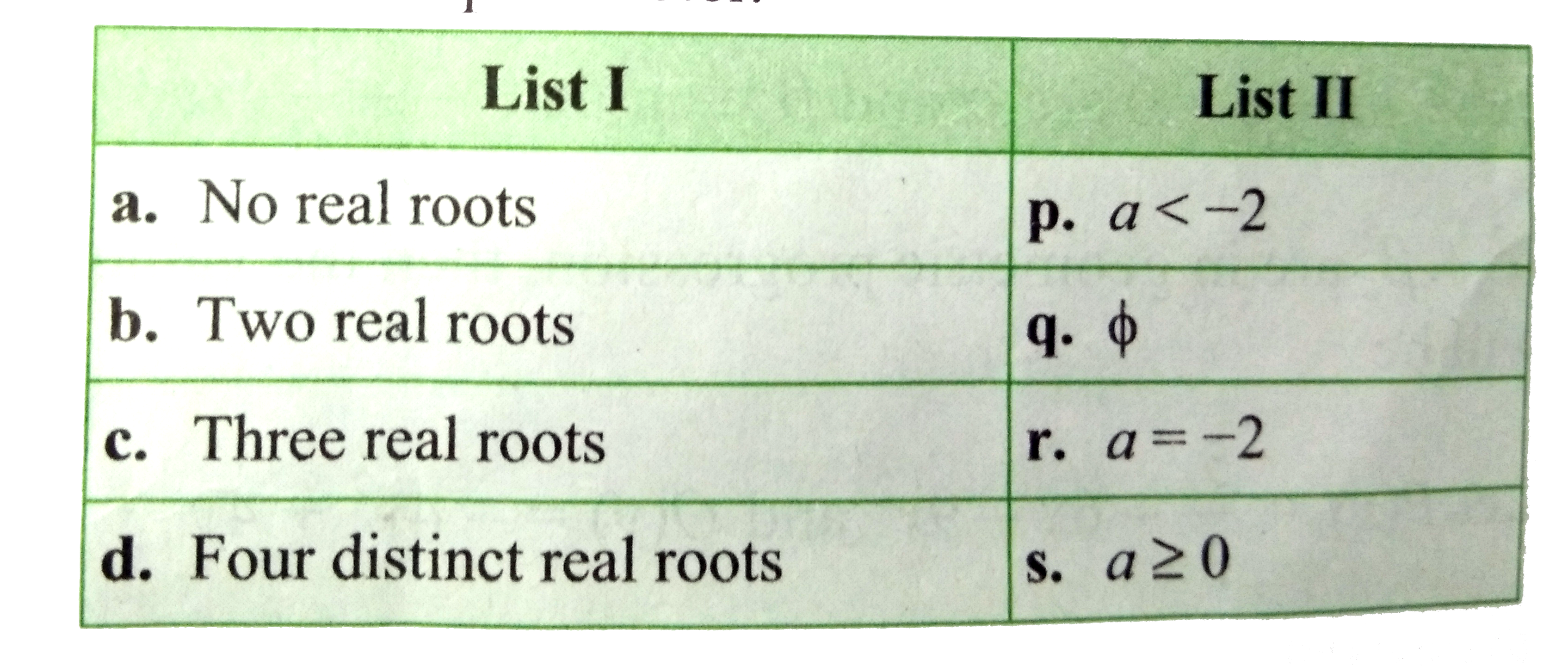(af(μ)<0) is the necessary and sufficient condition for a particular real number μ to lie between the roots of a quadratic equations f(x)=0, where f(x)=ax2+bx+c. Again if f(μ1)f(μ2)<0, then exactly one of the roots will lie between μ1 and μ2.
If (a+b+c)c<0<a(a+b+c), then Solution in Tamil
one roots is less than 0, the is posititve, the other is negative.
exactly one of the roots lies in (0,1)
both the roots lie in (0,1)
at least one of the roots lies in (0,1)
The correct Answer is:1
af(1)<0andf(0)f(1)>0
⇒af(1)<0andaf(0)<0
Hence, both the numbers 0 and 1 lie between the roots.
Topper's Solved these Questions
- BOOK - CENGAGECHAPTER - THEORY OF EQUATIONSEXERCISE - Exercise (Matrix)6videos
THEORY OF EQUATIONS
- BOOK - CENGAGECHAPTER - THEORY OF EQUATIONSEXERCISE - Exercise (Numerical)43videos
THEORY OF EQUATIONS
- BOOK - CENGAGECHAPTER - THEORY OF EQUATIONSEXERCISE - Exercise (Multiple)38videos
THEORY OF EQUATIONS
- BOOK - CENGAGECHAPTER - STRAIGHT LINESEXERCISE - JEE Advanced Previous Year4videos
STRAIGHT LINES
- BOOK - CENGAGECHAPTER - THREE DIMENSIONAL GEOMETRYEXERCISE - Question Bank12videos
THREE DIMENSIONAL GEOMETRY
Similar Questions
Match the following for the equation x2+a|x|+1=0 where, a is a parameter.
 05:20View Solution
05:20View SolutionIf x=2+223+213, then the value of x3−6x2+6x is:
02:08View Solutionif c≠0 and the equation p2x=ax+c+bx−c has two equal roots, then p can be
05:10View Solutionabout to only mathematics
01:59View SolutionThe equation of the plane which has the property that the point Q(5,4,5) is the reflection of point P(1,2,3) through that plane, is ax+by+cz=d where a,b,c,d∈N. Find the least value of (a+b+c+d).
01:18View SolutionLet f(x)=ax^(2)+bx+c, where a,b,c,in R and a!=0, If f(2)=3f(1) and 3 is a roots of the equation f(x)=0, then the other roots of f(x)=0 is
02:01View SolutionThe necessary and sufficient condition for which a fixed number d' lies between the roots of quadratic equation f(x)=ax^(2)+bx+c=0;(a,b,c in R), is f(d)<0
02:03View SolutionLet f(x)=ax2+bx+c, a≠0, a, b, c∈I. Suppose that f(1)=0, 50<f(7)<60 and 70<f(8)<80.
Number of integral values of x for which f(x)<0 is06:19View SolutionStatement-1: Ifαandβ are real roots of the quadratic equations ax2+bx+c=0and−ax2+bx+c=0, then a2x2+bx+c=0 has a real root between αandβ
Statement-2: If f(x) is a real polynomial and x1,x2∈R such that f(x1)fx2<0, then f(x) = 0 has at leat one real root between x1andx2.View SolutionStatement-1: If a, b, c, A, B, C are real numbers such that a<b<c, then f(x)=(x−a)(x−b)(x−c)−A2(x−a)−B2(x−b)−C2(x−c) has exactly one real root.
Statement-2: If f(x) is a real polynomical and x1,x2∈R such that f(x1)f(x2)<0, then f(x) has at least one real root between x1andx206:30View Solution(af(μ)<0) is the necessary and sufficient condition for a particular real number μ to lie between the roots of a quadratic equations f(x)=0, where f(x)=ax2+bx+c. Again if f(μ1)f(μ2)<0, then exactly one of the roots will lie between μ1 and μ2.
If |b|>|a+c|, then03:58View Solution(af(μ)<0) is the necessary and sufficient condition for a particular real number μ to lie between the roots of a quadratic equations f(x)=0, where f(x)=ax2+bx+c. Again if f(μ1)f(μ2)<0, then exactly one of the roots will lie between μ1 and μ2.
If a(a+b+c)<0<(a+b+c)c, then03:29View SolutionIf 0<a<b<cand the roots α,β of the equation ax2+bx+c=0 are imaginary, then
03:01View SolutionSuppose 0<b<candf(x)=x2−bc2x−(b+c),x∈R, then f(x) cannot lie in
02:30View SolutionLet f(x)=ax2+bx+c, a≠0, a, b, c∈I. Suppose that f(1)=0, 50<f(7)<60 and 70<f(8)<80.
Number of integral values of x for which f(x)<0 is04:49View Solution(af(μ)<0) is the necessary and sufficient condition for a particular real number μ to lie between the roots of a quadratic equations f(x)=0, where f(x)=ax2+bx+c. Again if f(μ1)f(μ2)<0, then exactly one of the roots will lie between μ1 and μ2.
If |b|>|a+c|, then04:38View Solution

